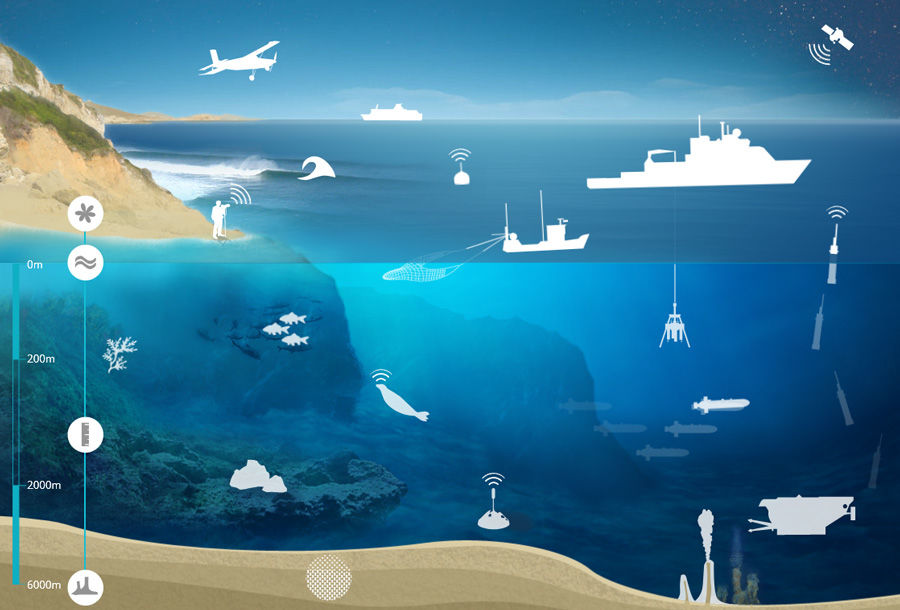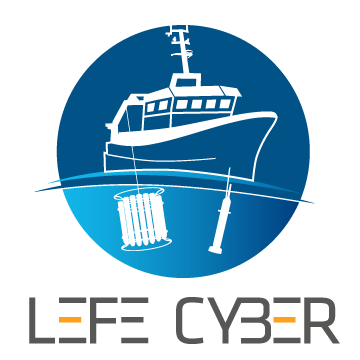Contaminants
Type of resources
Available actions
Topics
Keywords
Contact for the resource
Provided by
Years
Formats
Representation types
Update frequencies
status
Scale
-

The data file present detailed individual congener/compound concentrations for a large variety of hydrophobic organic contaminants including polychlorinated biphenyls (PCBs), organochlorine pesticides (OCPs), legacy and alternative brominated flame retardants (BFRs) and per- and polyfluoroalkyl substances (PFASs) in meso- and bathypelagic organisms collected in the Bay of Biscay, northeast Atlantic, in October 2017. The studied species include 3 crustacean species (Pasiphaea sivado, Sergia robusta, Ephyrina figueirai) and 11 fish species (Xenodermichthys copei, Searsia koefoedi, Myctophum punctatum, Notoscopelus kroeyeri, Lampanyctus crocodilus, Argyropelecus olfersii, Arctozenus risso, Stomias boa, Serrivomer beanii, Chauliodus sloani, Aphanopus carbo). The organisms were collected at night during one single trawling using a 25 m vertical opening pelagic trawl in the deep scattering layer (ca 800 m depth in the water column; 1330 m bottom floor). This dataset was used in the article entitled "A large diversity of organohalogen contaminants reach the meso- and bathypelagic organisms in the Bay of Biscay (northeast Atlantic)" published in Marine Pollution Bulletin.
-

210Pb, 226Ra and 137Cs were measured by non-destructive gamma spectrometry on marine sediment cores, collected during RIKEAU 2002 cruise on board r/v Thalia, on the shelf of the Bay of Biscay
-

Good Environmental Status assessment (GES) for descriptor 8 (contaminants, D8) of the Marine Strategy Framework Directive (MSFD) is reached when concentrations of contaminants are at levels not giving rise to pollution effects. It is described by 4 criteria among which the first one focus on the concentration of the contaminants in the environment (criteria 1 of the D8, D8C1). The environmental status for D8 in France includes assessment of contaminant concentrations in sediment, bivalves, fish, birds, mammals to cover the French marine area the continental shelf from the coast line). The 8 tables below present the assessment of the chemical contamination in sediment and bivalves on the coastal area of the 4 French marine subregions for D8 as part of the 2024 GES assessment. These tables report the status and temporal trends of each station x matrice x substance triplet in each of the 4 French marine subregions. Explanation on how to read the cells is given in the “read file”. The environmental assessment for D8 in France can be found in Mauffret al., 2023 (DOI:10.13155/97214). It includes 17 national indicator assessments, 4 OSPAR indicators and integrated assessment in selected assessment units at the level of the criteria 1 and 2.
-

ROCCH, the French Chemical Contaminant Monitoring Network, regularly provides a new official dataset for assessing the chemical quality status of French coastal waters. Concentrations of trace metal elements and organic compounds were measured in samples of marine surface sediments collected in the English Channel and Bay of Biscay, during 3 campaigns over a period of 6 years. Samples of fine sediment material, from 200 to 250 monitoring stations, were freeze-dried and sieved prior to analysis. The Results were submitted to the international database of ICES (for the OSPAR Convention).
-

This dataset gathers isotopic ratios (carbon and nitrogen) and concentrations of both priority (mercury species and polychlorinated biphenyls congeners) and emerging (musks and sunscreens) micropollutants measured in a host-parasite couple (hake Merluccius merluccius muscle and in its parasite Anisakis sp) from the south of Bay of Biscay in 2018. In addition, the hake infection degree measured as the number of Anisakis sp. larvae was added for each hake collected.
-

Rocch, the french "mussel watch", provides chemical data for marine quality management. Once a year, trace metals, organic compounds (chlorinated, PAH, brominated flame retardants, perfluorinated compounds, organotins ...) are analysed in molluscs tissues to check chemical quality according to European Framework Directives and to Regional Seas Convention (OSPAR).
-

This dataset gather isotopic ratios (carbon and nitrogen) and concentrations of mercury species (methyl and inorganic mercury) measured in several tissues (muscle, liver and gonad) for three commonly consumed fish species from the south Bay of Biscay (France) in 2017 and 2018.
-

Rocch, the french "mussel watch", provides regulatory data for shellfish area quality management. Once a year, molluscs (mainly mussels and oysters) were sampled at fixed periods (currently mid-February, with a tolerance of one tide before and after the target date) on 70 to 80 monitoring stations in areas used as bivalve molluscs production. For each monitoring station, molluscs are collected in wild beds or facilities, ensuring a minimum stay of 6 months on-site before sampling. The individuals selected are adults of a single species and uniform size (30 to 60 mm long for mussels, 2 to 3 years old for oysters, and commercial size for other species). A minimum of 50 mussels (and other species of similar size) or 10 oysters is required to constitute a representative pooled sample. Lead, mercury, cadmium, PAHs, PCBs, dioxins and, since 2023, regulated PFASs are analysed in molluscs tissues.
-

The SISMER (Scientific Information Systems of the Sea) is the Ifremer service in charge of the management of many marine databases or information systems which Ifremer is in charge of implementing.
-

The main purpose of the CYBER database, which supports projects selected by the Committee LEFE-CYBER, is to collect, store and disseminate data and scientific information (metadata).
 Catalogue PIGMA
Catalogue PIGMA